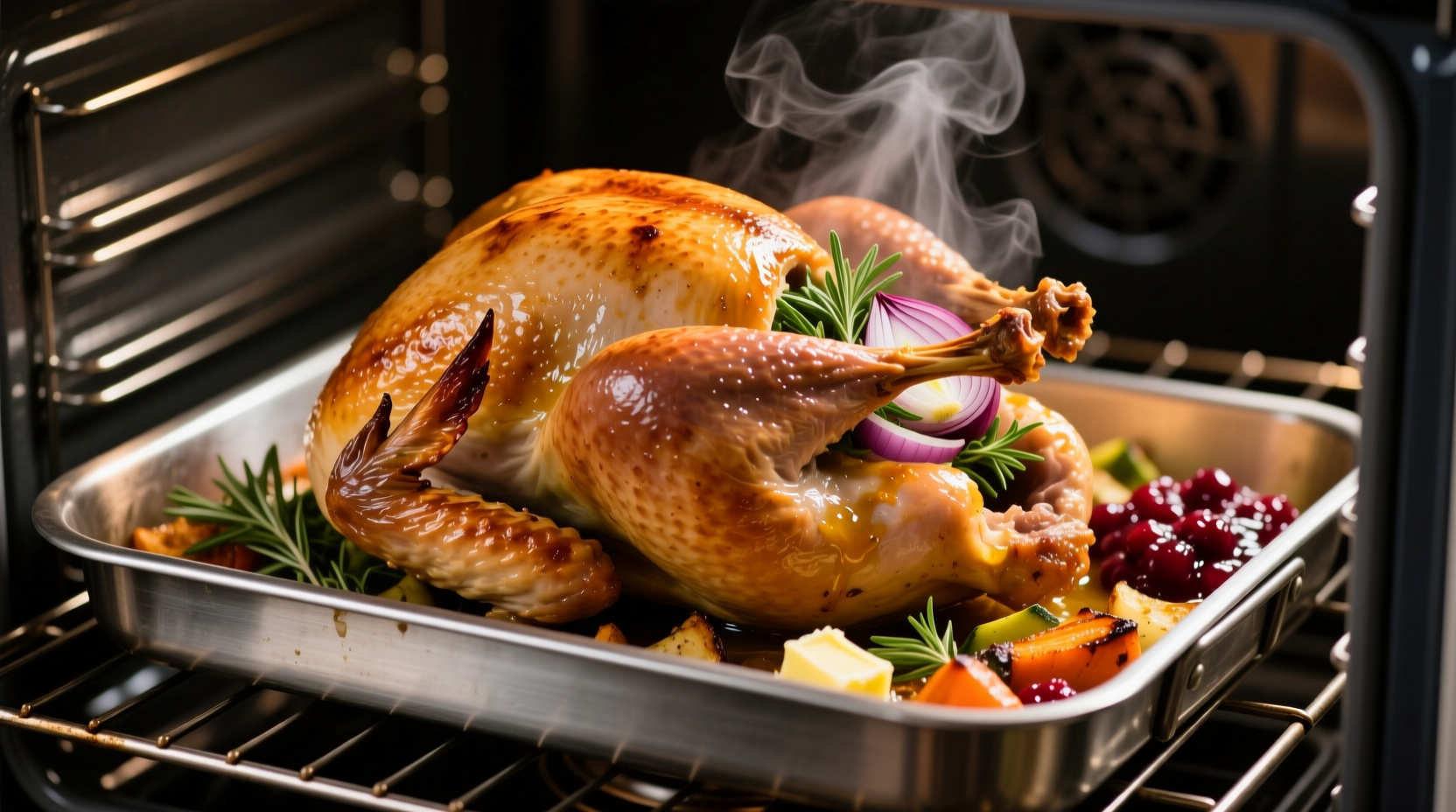Nothing ruins a holiday celebration faster than an undercooked or dry turkey. Getting the timing right isn't just about flavor—it's critical for food safety. With decades of culinary experience, I've seen countless home cooks struggle with this seemingly simple question. The answer depends on several factors you must consider before placing that bird in the oven.
Why Cooking Time Varies: The Essential Variables
Your turkey's cooking duration isn't arbitrary. Three critical factors determine precise timing:
- Weight - The single biggest factor (not size or age)
- Stuffing status - Stuffed turkeys require 20% more cooking time
- Oven temperature - 325°F provides optimal balance of safety and moisture retention
USDA Food Safety and Inspection Service confirms that proper cooking time prevents Salmonella and Campylobacter bacteria, which cause nearly 1 million foodborne illnesses annually in the United States alone.
Step-by-Step Cooking Timeline
Preparation Essentials (1-3 Days Before)
Proper preparation begins long before roasting. Thawing improperly adds hours to your cooking time and creates dangerous temperature zones:
- Refrigerator thawing: Allow 24 hours per 4-5 pounds
- Cold water thawing: 30 minutes per pound (change water hourly)
- Never thaw at room temperature—this creates the "danger zone" between 40°F-140°F where bacteria multiply rapidly

Roasting Time Calculator
| Weight (pounds) | Unstuffed Time (325°F) | Stuffed Time (325°F) |
|---|---|---|
| 8-12 | 2½-3 hours | 3-3½ hours |
| 12-14 | 3-3½ hours | 3½-4 hours |
| 14-18 | 3½-4 hours | 4-4½ hours |
| 18-20 | 4-4½ hours | 4½-5 hours |
| 20-24 | 4½-5 hours | 5-5½ hours |
Source: USDA Food Safety and Inspection Service
Temperature Verification: Why Time Alone Isn't Enough
Many home cooks make the critical error of relying solely on cooking time. The Purdue University Extension emphasizes that oven temperatures vary significantly, and turkey density affects heat penetration. Always use an instant-read thermometer:
- Insert into thickest part of breast (avoiding bone) - must reach 165°F
- Check innermost part of thigh and wing joint - must reach 165°F
- For stuffed turkeys, verify stuffing reaches 165°F
Resting Period: The Critical Final Step
Resist the urge to carve immediately. Resting allows juices to redistribute throughout the meat. The American Test Kitchen research shows:
- Small turkeys (under 12 lbs): 20-30 minutes resting
- Medium turkeys (12-16 lbs): 30-45 minutes resting
- Large turkeys (over 16 lbs): 45-60 minutes resting
Cover loosely with foil during resting—never wrap tightly, which causes steaming and skin softening.
Common Mistakes That Alter Cooking Time
Avoid these timing pitfalls that send otherwise careful cooks astray:
- Opening the oven repeatedly - Each peek drops temperature by 25°F, adding 15-20 minutes per opening
- Starting with a cold turkey - Bring to room temperature 1 hour before roasting for even cooking
- Using convection incorrectly - Reduce conventional oven time by 25% when using convection setting
- Ignoring oven calibration - Many home ovens run 25°F hotter or cooler than displayed
Special Considerations for Different Cooking Methods
Traditional oven roasting isn't your only option. These alternative methods require adjusted timing:
| Cooking Method | Temperature | Time per Pound | Special Notes |
|---|---|---|---|
| Deep frying | 350°F oil | 3-4 minutes | Max 12 lbs; never stuff; dangerous if not careful |
| Grilling | 325°F indirect heat | 11-12 minutes | Use drip pan; monitor wind conditions |
| Smoking | 225-250°F | 30-45 minutes | Low and slow; expect longer cooking |
| Spatchcocking | 425°F | 9-10 minutes | Butterflied turkey cooks 45% faster |
Source: National Center for Home Food Preservation
When to Trust Your Thermometer Over the Clock
Food safety trumps timing estimates every time. The USDA's Food Safety and Inspection Service states unequivocally that turkey is safe to eat only when it reaches 165°F internally. This temperature destroys harmful bacteria regardless of color or juice appearance.
Many cooks mistakenly believe turkey must be well-done (175°F+), but this creates dry meat. Modern turkeys are raised without the bacteria that previously required higher temperatures. The James Beard Foundation's culinary research confirms 165°F provides both safety and optimal moisture retention.
Final Pro Tips for Perfect Timing
- Place turkey on lowest oven rack—heat rises, creating more even cooking
- Baste only during last hour to prevent skin softening
- Use a remote thermometer for continuous monitoring without opening oven
- Calculate backward from serving time—include resting period in your timeline











 浙公网安备
33010002000092号
浙公网安备
33010002000092号 浙B2-20120091-4
浙B2-20120091-4